Name of the medicinal product:
Buy Dihydrocodeine 30mg Tablets
2. Qualitative and quantitative composition: Dihydrocodeine tartrate 30mg
3. Pharmaceutical form: Tablet – Oral use
4.1 Therapeutic indications
Dihydrocodeine 30mg is used to relieve moderate to severe pain.
4.2 Posology and method of administration
Adults:
1 tablet (30mg) every four to six hours or at the discretion of the physician.
Elderly:
Dosage should be reduced
Children aged 4 to 12 years:
0.5 to 1mg/kg bodyweight every four to six hours.
Children under 4 years:
Not recommended
Chronic hepatic disease:
The dosage should be reduced
Moderate to severe renal impairment:
The dosage should be reduced
For concomitant illnesses/conditions where dose reduction may be appropriate see 4.4 Special Warnings and Precautions for Use.
4.3 Contraindications
Acute respiratory depression.
Obstructive airways disease
Known hypersensitivity to dihydrocodeine, or other opioid analgesics, or to any of the excipients
Acute alcoholism
Severe hepatic dysfunction
Head injury or raised intracranial pressure (in addition to the risk of respiratory depression and increased intracranial pressure, may affect papillary and other responses vital for neurological assessment).
Children under 4 years of age.
Dihydrocodeine 30mg should not be given to comatose patients.
Dihydrocodeine 30mg is also contraindicated where there is a risk of paralytic ileus, or in acute diarrhoeal conditions such as acute ulcerative colitis or antibiotic associated colitis (e.g. pseudomembranous colitis) or diarrhoea caused by poisoning.
4.4 Special warnings and precautions for Dihydrocodeine 30mg
Dihydrocodeine 30mg should be given in reduced doses or with caution to patients with asthma and decreased respiratory reserve. Avoid use during an acute asthma attack (see 4.3 Contraindication). Dihydrocodeine should be given in reduced doses or with caution to elderly or debilitated patients (see 4.2 Posology) and in patients with adrenocortical insufficiency, prostatic hyperplasia, urethral stricture, hypotension, shock, inflammatory or obstructive bowel disorders, myasthenia gravis, hypothyroidism or convulsive disorders. It should be avoided or the dose reduced in patients with hepatic or renal impairment. However, these conditions should not necessarily be a deterrent to use in palliative care. Use in caution in those with a history of drug abuse.
Dihydrocodeine 30mg should be avoided in patients with biliary tract disorders or used in conjunction with an antispasmodic.
Administration of pethidine and possibly other opioid analgesics to patients taking a monoamine oxidase inhibitor (MAOI) has been associated with very severe and sometimes fatal reactions. If the use of codeine is considered essential then great care should be taken in patients taking MAOIs or within 14 days of stopping MAOIs (see section 4.5).
Alcohol should be avoided whilst under treatment with dihydrocodeine.
The risk-benefit of continued use should be assessed regularly by the prescriber.
The leaflet will state in a prominent position in the ‘before taking’ section:
• Do not take for longer than directed by your prescriber
• Taking dihydrocodeine (DHC) regularly for a long time can lead to addiction, which might cause you to feel restless and irritable when you stop the tablets.
• Taking a painkiller for headaches too often or for too long can make them worse.
The label will state (To be displayed prominently on outer pack –not boxed):
• Do not take for longer than directed by your prescriber as taking DHC regularly for a long time can to lead to addiction.
Discontinuation should be carried out gradually in patients who may have developed physical dependence, to avoid precipitating withdrawal symptoms.
Patients with rare hereditary problems of galactose intolerance, the Lapp lactase deficiency or glucose-galactose malabsorption should not take this medicine as it contains lactose.
4.5 Interaction with other medicinal products and other forms of interaction
Alcohol: The hypotensive, sedative and respiratory depressive effects of alcohol may be enhanced; alcohol should be avoided.
Anaesthetics: concomitant administration of dihydrocodeine and anaesthetics may cause increased CNS depression and/or respiratory depression and/or hypotension.
4.6 Pregnancy and lactation
A possible association with respiratory and cardiac malformations has been reported following first trimester exposure to codeine. Dihydrocodeine 30mg may cause respiratory depression in the neonate. Opioid analgesics may cause withdrawal effects in neonates of dependant mothers and gastric stasis during labour, increasing the risk of inhalation pneumonia.
It is not known if dihydrocodeine is excreted into breast milk and use should be avoided during breast-feeding unless the potential benefit outweighs the risk.Buy Dihydrocodeine 30mg Tablets
4.7 Effects on ability to drive and use machines
Dihydrocodeine 30mg produces sedation and may also cause changes in vision, including blurred or double vision. If affected, patients should not drive or operate machinery. The effects of alcohol are enhanced by opioid analgesics.
This medicine can impair cognitive function and can affect a patient’s ability to drive safely. This class of medicine is in the list of drugs included in regulations under 5a of the Road of Traffic Act 1988. When prescribing this medicine, patients should be told:
• The medicine is likely to affect your ability to drive
• Do not drive until you know how the medicine affects you
• It is an offence to drive while under the influence of this medicine.
• However, you would not be committing an offence (called ‘statutory defence’) if:
o Dihydrocodeine 30mg has been prescribed to treat a medical or dental problem and
o You have taken it according to the instructions given by the prescriber and in the information provided with the medicine and
o It was not affecting your ability to drive safely
4.8 Undesirable effects
Regular prolonged use of Dihydrocodeine 30mg is known to lead to addiction and tolerance. Symptoms of restlessness and irritability may result when treatment is then stopped.
Prolonged use of a painkiller for headaches can make them worse.
Tolerance and some of the most common side effects – drowsiness, nausea, and vomiting, and confusion – generally develops with long term use.Buy Dihydrocodeine 30mg Tablets
Immune system disorders: maculopapular rash has been seen as part of a hypersensitivity syndrome associated with oral codeine phosphate; fever, splenomegaly and lymphadenopathy also occurred.
Endocrine disorders: hyperglycaemia
Metabolism and nutrition disorders: anorexia.
Psychiatric disorders: mental depression, hallucinations and nightmares, restlessness, confusion, mood changes, euphoria, dysphoria.
Nervous System disorders: convulsions (especially in infants and children), dizziness, drowsiness, headache, (prolonged use of a painkiller for headaches can make them worse). Raised intracranial pressure may occur in some patients.
Eye disorders: blurred or double vision or other changes in vision. Miosis.
Ear and labyrinth disorders: vertigo.
Cardiac disorders: tachycardia, palpitations and bradycardia.
Vascular disorders: postural hypotension, facial flushing. Large doses produce hypotension.
Respiratory, thoracic and mediastinal disorders: Dyspnoea. Larger doses produce respiratory depression.
Gastrointestinal disorders: nausea, vomiting, constipation, dry mouth, stomach cramps, pancreatitis.
Hepatobiliary disorders: Biliary spasm (may be associated with altered liver enzyme values).
Skin and subcutaneous tissue disorders: allergic reactions, such as skin rash, pruritus, urticaria, sweating, facial oedema.
Musculoskeletal and connective tissue disorders: Uncontrolled muscle movements. Muscle rigidity may occur after high doses.
Renal and urinary disorders: urinary retention, difficulty with micturition, ureteric spasm, dysuria. An antidiuretic effect may also occur with codeine.Buy Dihydrocodeine 30mg Tablets
Reproductive system and breast disorders: sexual dysfunction, erectile dysfunction, decreased potency. Decreased libido.
General disorders and administration site conditions: malaise, tiredness, hypothermia.
Dose-related increased post-operative pain has been reported following dental surgery.
4.9 Dihydrocodeine 30mg Overdose
Toxic doses vary considerably with the individual and regular users may tolerate large doses. The triad of coma, pinpoint pupils and respiratory depression is considered indicative of opioid overdosage with dilatation of the pupils occurring as hypoxia develops. Other opioid overdose symptoms include hypothermia, confusion, convulsions, severe dizziness, severe drowsiness, hypotension, nervousness or restlessness, hallucinations, slow heart beat, circulatory failure, slow or troubled breathing, severe weakness, convulsions, especially in infants and children. Rhabdomyolysis, progressing to renal failure, has been reported in overdosage with opioids.
Conservative management is recommended.
buy dihydrocodeine 30mg online, dihydrocodeine 30mg for sale, order dihydrocodeine 30mg online, where to buy dihydrocodeine 30mg online, buy dihydrocodeine 30mg pills online, buy dihydrocodeine 30mg online in USA, dihydrocodeine 30mg for sale Canada, mail dihydrocodeine 30mg, order dihydrocodeine 30mg with Money Gram, dihydrocodeine 30mg for sale with , buy dihydrocodeine 30mg online with Bitcoin, dihydrocodeine 30mg for sale USA, buy dihydrocodeine 30mg online at cheap price, buy dihydrocodeine 30mg online without prescriptions.



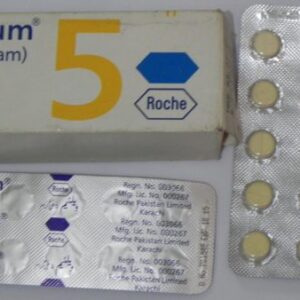
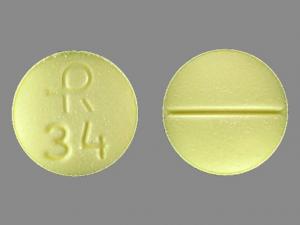



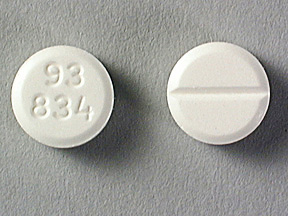
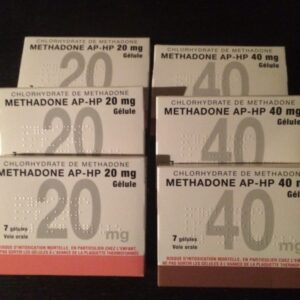
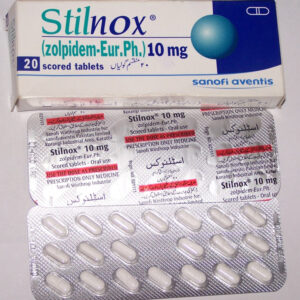
Reviews
There are no reviews yet.